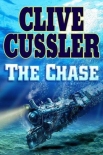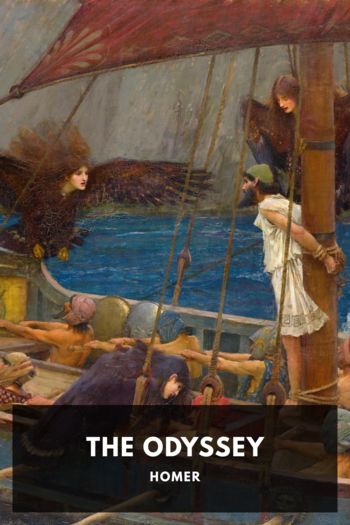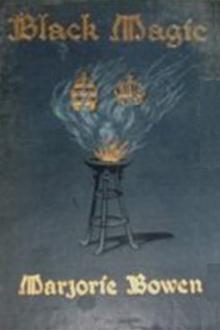The Chase, Clive Cussler [best memoirs of all time txt] 📗

- Author: Clive Cussler
Book online «The Chase, Clive Cussler [best memoirs of all time txt] 📗». Author Clive Cussler
Then, slowly, his thoughts of the Cromwells evaporated and he became quiet, gentle, and loving as he picked her up in his arms. “I knew there was a reason I fell in love with you,” he said, his voice becoming low and husky. “You’re smarter than I am.”
Her whole body trembled as she entwined her arms around his neck. “Oh, God, Isaac. I love you, too.”
He gently touched his lips to hers as he carried her from the living room into the bedroom. She pulled away and looked up, her eyes now mischievous. “What about the lemon meringue pie?”
He gazed down at her lovely features and laughed. “We can always eat it for breakfast.”
Bell could not have predicted nor much less have known that within a few hours the pie would become but a dim memory.
37
CALLED THE HALLMARK OF THE WEST, THE SAN FRANCISCO of 1906 was a maze of contradictions. One writer described the city as the Babylon of grandiloquence, the Paris of romance, and the Hong Kong of adventure. Another went so far as to portray it as the gateway to paradise.
It may have been dynamic and exciting, but, in truth, San Francisco was a sprawling, filthy, soot-ridden, foul-smelling, brawling, corrupt, vulgar city with less charm than London in the seventeen hundreds. It intermingled incredible wealth with sordid poverty. Coal smoke from steamboats, locomotives, foundries, house furnaces and stoves enveloped streets already blanketed by the dung of thousands of horses. There were no sewage-treatment plants to be found and the blackened skies reeked of foul odors.
Most all the houses were built of wood. From the nice homes on Telegraph Hill to the stylish mansions of Nob Hill to the shacks and hovels in the outlying districts, it was described by the city’s fire chief as a sea of tinderboxes waiting to be lit.
The image and the myth were to change dramatically within two and a half minutes.
At 5:12 A.M., on the morning of April 18th, the sun was beginning to lighten the eastern sky. The gas streetlights had been shut off and the cable cars began to clatter from their barns for their runs up and down the many hills of the city. Early workers began walking to their job as those who worked during the late-night hours headed home. Bakers were already at their ovens. Police on the early-morning shift still patrolled their beats, expecting another quiet day, as a light wind without the prevailing fog blew in from the west.
But at 5:12, the peaceful world of San Francisco and its surrounding towns was shattered by an ominous, rumbling roar that came from the depths of the earth a few miles under the sea beyond the Golden Gate.
Hell had come to San Francisco.
The foreshock shook the surrounding countryside and was felt throughout the Bay Area. Twenty-five seconds later, terrifying, undulating shock waves from the massive earthquake surged across the city like a monstrous hand sweeping stacks of books off a table.
The rock of the San Andreas Fault, whose walls had been grinding against each other for millions of years, abruptly split apart as the North American Plate under the land and the Pacific Plate beneath the sea unleashed their grip on each other and shifted in opposite directions, one to the north, the other to the south.
The unimaginable force raged toward the helpless city at seven thousand miles an hour in a disastrous spree that would leave monumental death and destruction in its wake.
The shock wave struck with savage swiftness. The pavement of the streets running east and west began to rise and crest before falling into troughs, as the quake rolled relentlessly forward and sent block upon block of tall buildings rocking and swaying like willow trees in a hurricane. Wood, mortar, and brick were never meant to withstand such an onslaught. One by one, the buildings began to crumble, their walls falling and avalanching into the streets under a cloud of dust and debris. Every window in the stores along the avenues burst and shattered onto the sidewalks in a shower of jagged shards.
Huge five-and ten-story buildings in the downtown business section toppled in a horrendous crash that sounded like a cannon barrage. Chasms opened and closed on the streets, some filling with groundwater and spilling into the gutters. The rails of streetcars and cable cars were twisted and bent like strands of spaghetti. The most violent shocks lasted for slightly more than a minute before diminishing, although smaller aftershocks continued off and on for several days.
When the full light of day showed through the chaos, all that was left of a major city of tall buildings, comprising a vast number of stores, offices, banks, theaters, hotels, restaurants, saloons and brothels, houses and apartments, was now a hundred square miles of jagged mounds of shattered masonry, splintered wood, and twisted iron. Though they’d looked substantial, most of the buildings were not reinforced and fell to pieces before the earthquake was thirty seconds old.
The city hall, the most impressive edifice west of Chicago, sat smashed and destroyed, its cast-iron columns lying shattered in the street. The Hall of Justice was a skeleton of mangled steel girders. The Academy of Sciences gone as though it had never stood. The post office was still standing but effectively demolished. The Majestic Theater would never stage a show again. Only the redoubtable six-story Wells Fargo Building had refused to tumble down despite a ravaged interior.
Thousands of chimneys had been first to fall. None was built with an earthquake in mind. Reaching through and high above the roofs, unable to bend and sway and with no support, they shuddered, then fractured and fell through houses and onto streets that were





Comments (0)